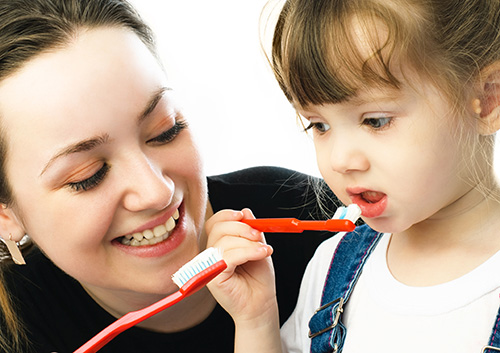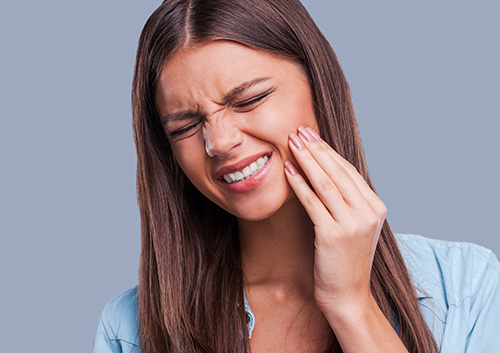July 6th, 2022

Over time, everyone’s teeth can naturally become dull, due to aging and consumption of staining foods such as chocolate and coffee. The good news is that teeth-whitening treatments can help you maintain white teeth that last a lifetime.
Get Regular Treatments
Regular treatments at Smiles By Beck are necessary to keep your teeth white for life, since whitening treatments are only temporary. Bleaching too frequently, however, can wear away your tooth enamel.
The effects of in-office bleaching are safe and can last for several months to a year. You may need to repeat your use of at-home bleaching kits every few months to maintain your white teeth. As far as day to day, whitening toothpastes are safe to use on a daily basis. The American Dental Association suggests you ask your dentist for advice on which treatment is best for you.
Have Realistic Expectations
Everyone’s teeth are different and, according to the American Dental Association, not all smiles can be turned bright white. Teeth can naturally be a light yellowish color that responds well to teeth-whitening procedures, but bleach is not likely to be effective for grayish teeth. Results for brownish teeth fall somewhere in between.
Practice Good Oral Hygiene
Good hygiene is imperative for teeth-whitening efforts. Visible fillings, implants, or bridges that are metallic can be visible against the white color you desire. These treatments can be prevented by maintaining a good oral hygiene routine.
In addition to brushing your teeth twice a day to remove dirt and potential staining agents, keep the following tips in mind:
- Floss every day
- Visit our Tallahassee, FL office every six months
- Rinse your mouth with water after each meal and snack
- Limit sugary and starchy foods and beverages, especially between meals
July 6th, 2022

Over time, everyone’s teeth can naturally become dull, due to aging and consumption of staining foods such as chocolate and coffee. The good news is that teeth-whitening treatments can help you maintain white teeth that last a lifetime.
Get Regular Treatments
Regular treatments at Smiles By Beck are necessary to keep your teeth white for life, since whitening treatments are only temporary. Bleaching too frequently, however, can wear away your tooth enamel.
The effects of in-office bleaching are safe and can last for several months to a year. You may need to repeat your use of at-home bleaching kits every few months to maintain your white teeth. As far as day to day, whitening toothpastes are safe to use on a daily basis. The American Dental Association suggests you ask your dentist for advice on which treatment is best for you.
Have Realistic Expectations
Everyone’s teeth are different and, according to the American Dental Association, not all smiles can be turned bright white. Teeth can naturally be a light yellowish color that responds well to teeth-whitening procedures, but bleach is not likely to be effective for grayish teeth. Results for brownish teeth fall somewhere in between.
Practice Good Oral Hygiene
Good hygiene is imperative for teeth-whitening efforts. Visible fillings, implants, or bridges that are metallic can be visible against the white color you desire. These treatments can be prevented by maintaining a good oral hygiene routine.
In addition to brushing your teeth twice a day to remove dirt and potential staining agents, keep the following tips in mind:
- Floss every day
- Visit our Tallahassee, FL office every six months
- Rinse your mouth with water after each meal and snack
- Limit sugary and starchy foods and beverages, especially between meals
June 29th, 2022

When it comes to dental hygiene, “going green” is not the first phrase that comes to mind. But if you are brushing properly, you are also replacing your toothbrush every three to four months as the bristles become frayed and wear down. Sure, that’s a tiny amount of plastic from each of us going to our landfills, yet it adds up to millions of brushes a year nationally. If you are concerned about reducing your carbon footprint while reducing your risk of cavities, there are several new toothbrushes designed to make brushing more eco-friendly.
Biodegradable Toothbrushes
Some brushes claim to be completely compostable. These models generally have heads fitted with boar bristles and handles manufactured from sustainable woods or bamboo. Boar bristles aren’t for everyone. Some users complain of the taste of the bristles, and boar bristles might be harsher than the soft bristles we recommend to protect both enamel and gums. There is also some concern about bacteria growth on organic bristles.
Earth-friendly Handles and Bristles
If you prefer the consistency and texture of regular synthetic bristles, you can still opt for a brush with a handle of sustainable wood or bamboo. You can also select PBA-free bristles, bristles made primarily of castor oil, or bristles that use natural ingredients in combination with synthetics.
Reduce, Reuse, Recycle
If these exotic brushes aren’t for you, there are more conventional choices that will save energy and cut down on waste.
- Reduce the amount of electricity you use for your electric toothbrush with a model that requires less charging time.
- Reuse your toothbrush by buying one with a handle made of metal, natural materials or plastic and replace the detachable head every three months.
- Recycled plastics can be found in the handles of some toothbrushes, and many brushes come in recyclable packaging. Every bit helps!
If you decide to use one of these green products, remember that your dental health is still the primary goal. Be sure the bristles of your brush are soft enough to protect your gums and enamel and can reach all the places you need to brush. The handle should be easy to grip and the head should be a comfortable fit for your mouth. It’s always best to choose products with a seal of acceptance from your local dental association, or talk to us about greener alternatives during your next visit to our Tallahassee, FL office. Luckily, there are several workable options to protect the health of your family's teeth while still being mindful of the health of our planet.
June 22nd, 2022

You just crunched down on a piece of hard food when you suddenly realize there is something hard still in your mouth. Your nightmare is confirmed when you retrieve a piece of your tooth from your mouth. You chipped your tooth; now what?
Obviously, the first thing you need to do is call our Tallahassee, FL office. While we make every effort to see emergent cases immediately, you may have to wait a day or so before you can see Drs Julie Bailey, Jacob Woods, Marci, Glenn, and Brian Beck. Luckily, it’s easy to take care of your chipped tooth while you wait.
How to Take Care of a Chipped
The last thing you want is for the tooth to become infected or break even more. Let’s look at a few things you can do:
- If the chipped tooth is causing you pain take an over-the-counter pain medication, like Tylenol. Always follow the directions on the label.
- You should also rinse your mouth with lukewarm saltwater, as this will help prevent an infection from setting in.
- If your chipped tooth has a sharp edge, cover it up with a piece of wax to prevent it from cutting you cheek, tongue, or lip.
- If you have to eat, make sure you eat soft foods and don’t bite down on the chipped or broken tooth.
Treatment Options for a Chipped Tooth
- Dental Filling and Bonding – If you only have a small chip in your tooth, Drs Julie Bailey, Jacob Woods, Marci, Glenn, and Brian Beck will probably fix it with a filling. If it is a front tooth, we may bond the tooth using a tooth-colored compound.
- Dental Crown or Cap – If you broke a large piece of your tooth, we may grind the remaining part of your tooth and put a crown or cap on it.
- Dental Veneers – If you chipped or broke your front tooth then choosing a dental veneer may be your best choice. It will make your tooth look completely normal.
- Root Canal – If you cracked your tooth and the center (pulp) of the tooth is exposed and infected, you will need a root canal. If the center of your tooth is exposed, it becomes vulnerable to bacteria that will cause your tooth to abscess.
Chipping or breaking your tooth is never a good thing, and you should always call our Tallahassee, FL office right away. The sooner you get your tooth repaired the less likely you are to have any problems with it.





 Website Powered by Sesame 24-7™
Website Powered by Sesame 24-7™